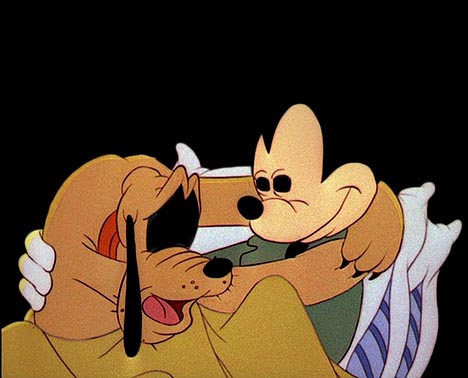
translated and summarized by: Liz Wollner-Grandville,
English Summary May 24 - 30
Kunstmuseum Basel
Gabriel Orozco
18.04.10 bis 08.08.10
Mexican Chambers of Wonders
Gabriel Orozco’s exhibition at the Kunstmuseum Basel offers an unusual opening. After having passed Andy Warhol’s two-part work from the Car Crash Series, the “Black & White Disaster” (1972), the viewer is suddenly confronted with Orozco’s captivating master piece “La DS” (1993) - a reassembled Citroen DS, stylized to a rocket-like high-speed vehicle without a motor. This juxtaposition clearly shows the Mexican’s respect for the accomplishments of his forefathers and at the same time points to how their accomplishments can be overcome with playful ease. Orozco’s interventions, in which he preserves the objects’ fundamental identity, can be understood as both marked and occasionally cautious reconfigurations. Nevertheless, he transforms the object and “takes the memory of it apart; transforms the memory”, as Orozco described his work. This principle can be found in the “Four Bicycles” (1994), in which four bicycles are intertwined into each other, as well as in the “Elevator” (1994), in which an elevator was adjusted to the artist’s body height.
The Basel exhibition, divided into 8 rooms, with the “Working Tables” (1991-2006) as the focal point, offers an inspiring dramaturgy. While Room 1 with “La DS”, “Four Bicycles” and “Recaptured Nature” (1990) could also be viewed as an homage to unusual means of transportation, the photographic confrontations in Room 2 create a cosmos of ephemeral (“Breath on Piano”, 1993), graceful (“Simon’s Island”, 2005) and refreshing (“Cats and Watermelons”, 1992) impressions. In “My Hands Are My Heart” (1991), Oroczo gets to the heart of an ephemeral moment and the deep melancholy of most of his objects. In Room 3 the vertical axis of the inoperative “Elevator” (1994) clashes with the horizontal axis of “Dial Tone” (1992), a scroll comprised of thousands of telephone numbers, as well as with the drawing “Untitled Finger Tone” (1995). All three can be seen as works pointing to differing automatisms of rhythmic time.
The “Working Tables” are displayed in Room 4. Positioned in the centre, they are the heart and the index of the exhibition, the laboratory in the sense of Borges’ library. With the support of the Karl and Margrith Schau-Tschudin Foundation, museum director Mendes Bürgi was able to attain this significant work for the Basel exhibit. Similar to the grace of manta rays, the organic metamorphoses of the “Spumes” (2003), made of polyurethane foam, float through Room 5, and already familiar objects are displayed Room 6. Together with numerous diverse works, such as “Pelvis” (2007), “Seed” (2005) and the beating heart of “My Hands Are My Heart”, the objects symbolize the human body. Appropriately, society in its various forms, represented by circle-like ornamental structures on money bills and works from the series “Atomist” (1996), showing revised newspaper sports-photographs, are presented. These systems of order find their continuation in Room 7 with paintings created in 2004, their infinite form reminding of Karl Gerstner’s Algorithms. With “Horses Running Endlessly” (1995), an oversized, four-colored chessboard with 256 squares and 60 knights, the painted circles and their richness in variety is transferred into 3D and relieved from its temporary boundary of a chess game. The black-and-white checkered skull “Black Kites” (1997) appears like a Memento Mori. With this warning, following the “Eyes under Elephant Foot” (2009), the exhibition finds a surprisingly easy and simultaneously melancholy outlook and a dignified end. 18 different sized tumbler fluffs in different shades of grey are mounted on eight wires spanned across the room offering a view on Wilhelm Lehmbruck’s female Torso (1910). The ephemeral becomes timeless; the circle to Andy Warhol’s Car Crash is closed. And in the midst is Gabriel Orozco’s Mexican Chamber of Wonders with all its extraordinary treasures.
By Harald Krämer
Kunstmuseum Basel
4010 Basel, St.Alban-Graben 16
www.kunstmuseumbasel.ch
Galerie Martin Janda Raum aktueller Kunst
curated by _ Martin Arnold: Blinking
06.05.10 – 05.06.10
Hectic blinking
Martin Arnold came up with a very special topic for his contribution to the project “curated by”, in which 20 Viennese galleries invited artists to curate an exhibition: all of the works centre on the phenomenon of blinking. Arnold wonders if “the story of envisaging can be told without the story of overlooking.”
In any case, it is invigorating that Runa Islam’s early work (Rapid Eye Movement, 2002) is shown in this context. Islam’s video shows people who have fallen asleep in a train compartment and conceptualizes mysterious scenes. Islam repeatedly focuses on the twitching lids of their closed eyes – after the REM phase has set in, the dreamlike sequences are interrupted by nervousness and hectic.
Arnold’s own work “Shadow Cuts” is similarly overwrought and nearly aggressive. He modified the final scenes of a cartoon showing Mickey Mouse and Pluto blinking hectically; the figures seem oddly attracted to one another, they eyes are wide open. What was once a Happy End has turned into a crazy relationship-drama.
Owen Land’s found-footage film (1965-66) is much calmer, but also including scenes on blinking with a negative connotation. Women, forced to stare into the camera, blinked instinctively during the tedious process of colour-coordination at film-shootings.
The three positions presented at this exhibition do not suffice to answer Arnold’s question on “overlooking”. A wider spectrum of works on this topic would have been desirable and maybe it is an inspiration for a larger exhibition in the future.
By Nina Schedlmayer
Galerie Martin Janda Raum aktueller Kunst
1010 Vienna, Eschenbachgasse 11
www.martinjanda.at
Mehr Texte von translated and summarized by: Liz Wollner-Grandville


 Teilen
Teilen

